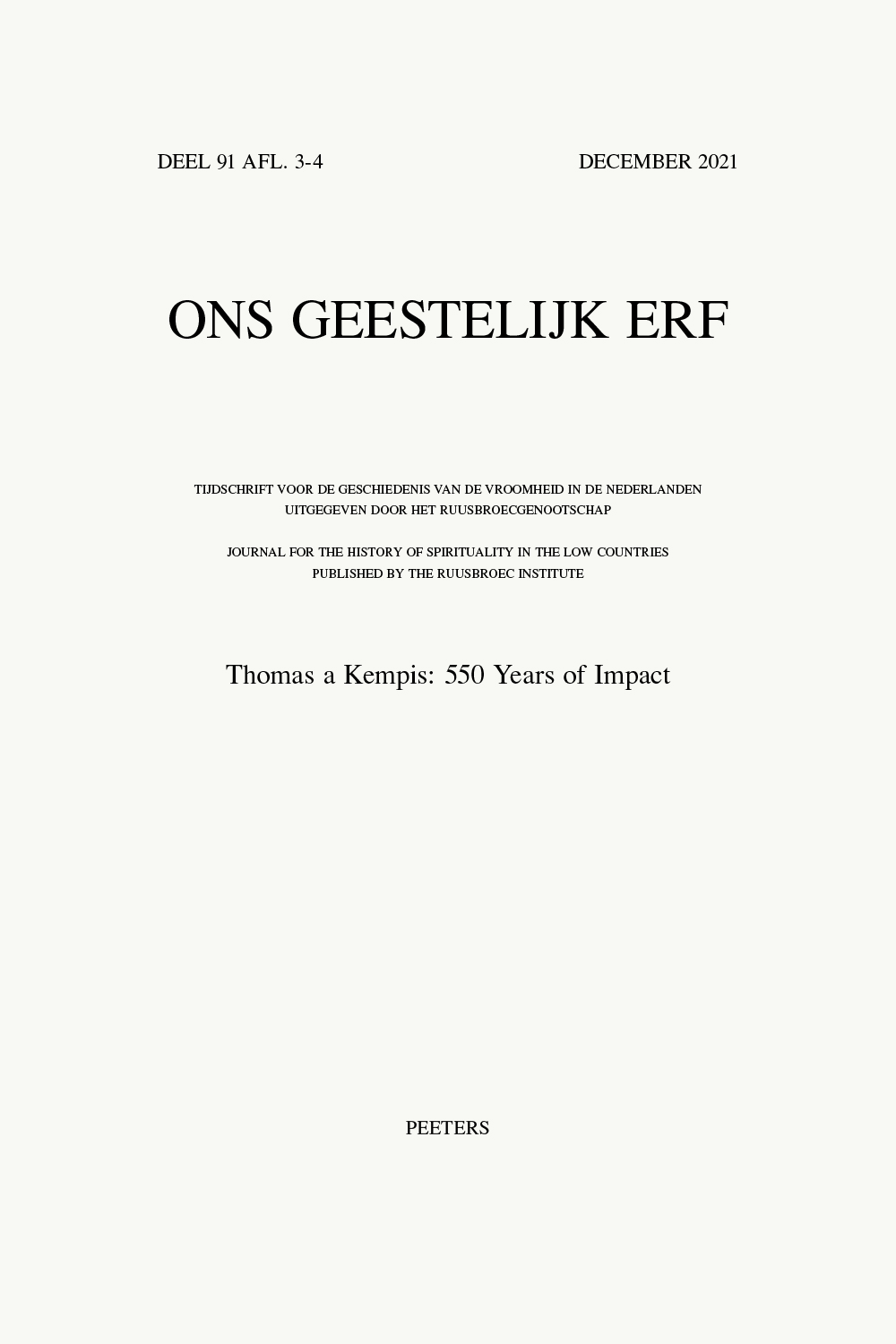 previous article in this issue previous article in this issue | next article in this issue  |

Preview first page |
Document Details : Title: Mystiek op schrift in vrouwenkloosters uit de traditie van de Moderne Devotie Subtitle: Een oriënterende vergelijking van drie collecties: Arnhem, Geldern en Maaseik Author(s): KIENHORST, Hans Journal: Ons Geestelijk Erf Volume: 81 Issue: 1 Date: Maart 2010 Pages: 38-63 DOI: 10.2143/OGE.81.1.2049256 Abstract : Thus far, sixteen Middle Dutch manuscripts that once belonged to the Saint Agnes convent in Arnhem, have been identified. At least four out of nine fifteenth-century manuscripts were written in the monastery. The nuns wrote all seven sixteenth-century manuscripts at some time between c. 1540 and 1575. Six of those contain mystical texts. One category of texts derives from the fourteenth- and fifteenth-century mystical traditions (and some were copied from books published by the Cologne Carthusians), while the other category consists of more recent works, among which the Arnhem mystical sermons. This papers aims to highlight the extraordinarily mystical character of the Arnhem collection in comparison to the collections of St. Agnes in Maaseik and Nazareth in Geldern. Whereas the Nazareth manuscripts evidences interest for mystical texts from earlier periods, especially of Jan van Ruusbroec, this penchant for mysticism all but finishes at the end of the fifteenth century. Even though the much larger collection of manuscripts at St. Agnes in Maaseik extends well into the sixteenth century, especially the period around 1510, it can hardly compete with Arnhem when it comes to mysticism. There are six devotional miscellanies – four containing Suso’s Hundert Betrachtungen – and two manuscripts from the late 1540s with texts of Ruusbroec, Eckhart and Tauler, whereas the Arnhem manuscripts are witness to a broader and more profound interest in mystical spirituality. |
|


